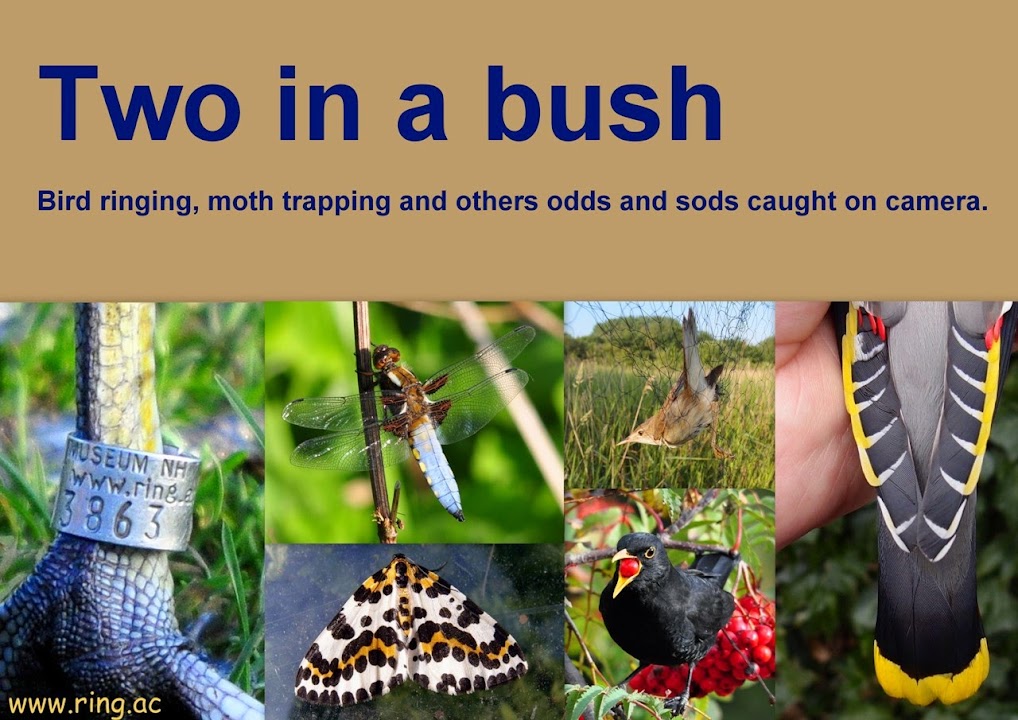I made the effort because I was curious to see how many juvenile and adult Willow Warblers I would catch and if the proportion of juveniles would increase. A total of 100 birds (92 new & 8 retraps) were caught over the four sessions and almost half (43 new & 4 retraps) were Willow Warblers. Interestingly, the proportion of adult Willow Warblers remained relatively high with 11 out of the 47 being adults, although one had been encountered earlier in the month.
 |
| Adult Willow Warbler showing quite an extensive pure white belly. |
July Willow Warblers
|
||||
Year
|
Juveniles
|
Adults
|
Ratio (rounded off)
|
Visits
|
2017
|
77
|
27
|
3:1
|
13
|
2016
|
101
|
6
|
16:1
|
13
|
2015
|
71
|
14
|
5:1
|
11
|
2014
|
81
|
9
|
9:1
|
13
|
A ratio of just under 3:1 is much closer to the actual productivity of Willow Warblers but that is not what I am used to seeing at this site, hence my interest being sparked by the high number of adults encountered this year. There did seem to be more adults around in the spring so better over-winter survival resulting in a higher breeding population may have played a part, although it appears to be too much of a increase to account for it all. If a much higher breeding population was part or all of the cause then it still suggests productivity is low this year as more pairs would be expected to produce more offspring unless productivity has been negatively affected in some way. There is also the possibility that some of the adults were migrants rather than local birds as some were nearing the end of their moult and many adults will start migrating just before the innermost secondaries are fully grown. Either way I have caught a lot more adults this July than usual and multiple factors may be involved. As I said in my previous post it will be interesting to see how the 2017 CES results and other surveys compare.
I don't operate a standardised mist-netting regime so that has to be borne in mind when looking at the figures, ringing effort, however, was reasonably consistent so I still thought the figures were worth sharing. Willow Warblers are declining across the UK with the exception of Scotland and I am lucky to have a site that still has quite a good breeding population and also attracts good numbers of passage migrants (especially for an inland site). In 2016 a total of 367 Willow Warblers were ringed at the site which, like the 2016 July totals, was significantly up on the previous 2 years (2015/256 & 2014/240) so it will be interesting to see what the total looks like at the end of this year.
Highlights amongst the other birds caught included the first Garden Warbler of the autumn. A Whitethroat was also a first for the autumn but an unusually late one at that, I don't catch many Whitethroats at the site but I've usually caught a few juveniles well before the end of the month. Goldcrest on the other hand appear to be having a good year with another 10 bringing the total for July to 19. This compares favourably with the July totals for previous years - 10 in 2016, 8 in 2015 and only 3 in 2014.
Combined ringing totals (retraps in brackets) for 28th to 31st July 2017 were: Goldcrest 10; Blue Tit 3; Great Tit 4; Chiffchaff 4(2); Willow Warbler 43(4); Blackcap 7(1); Garden Warbler 1, Whitethroat 1; Treecreeper 1; Wren 4; Song Thrush 1; Robin 2, Chaffinch 1; Bullfinch 2; Linnet 5; Goldfinch 2 (2); Reed Bunting.
 |
| Garden Warbler. A scarce passage migrant at the site with most records coming in late July and early August. |
 |
| Whitethroat. A few pairs breed at the site so I usually catch a few juveniles in July but not this year. |



No comments:
Post a Comment